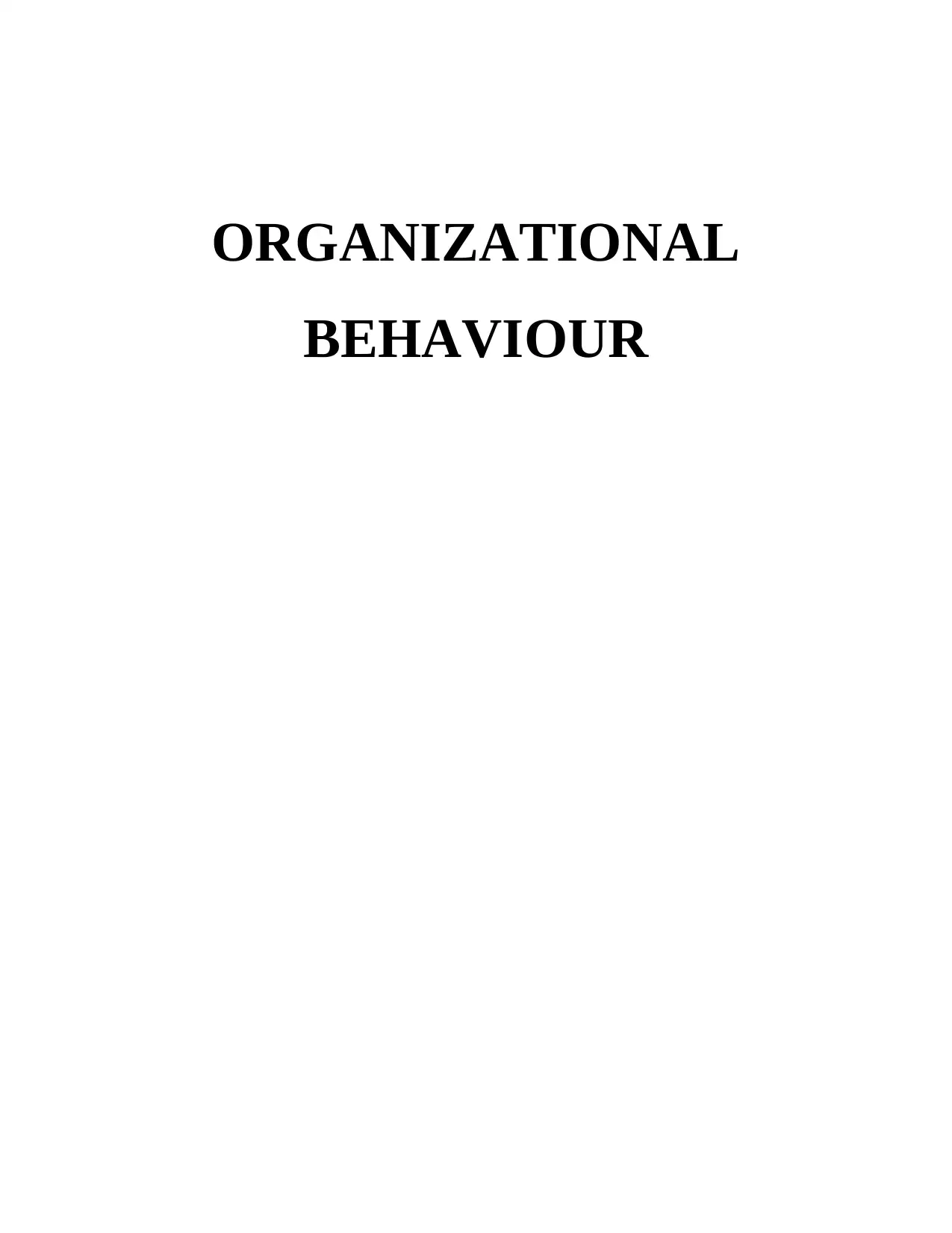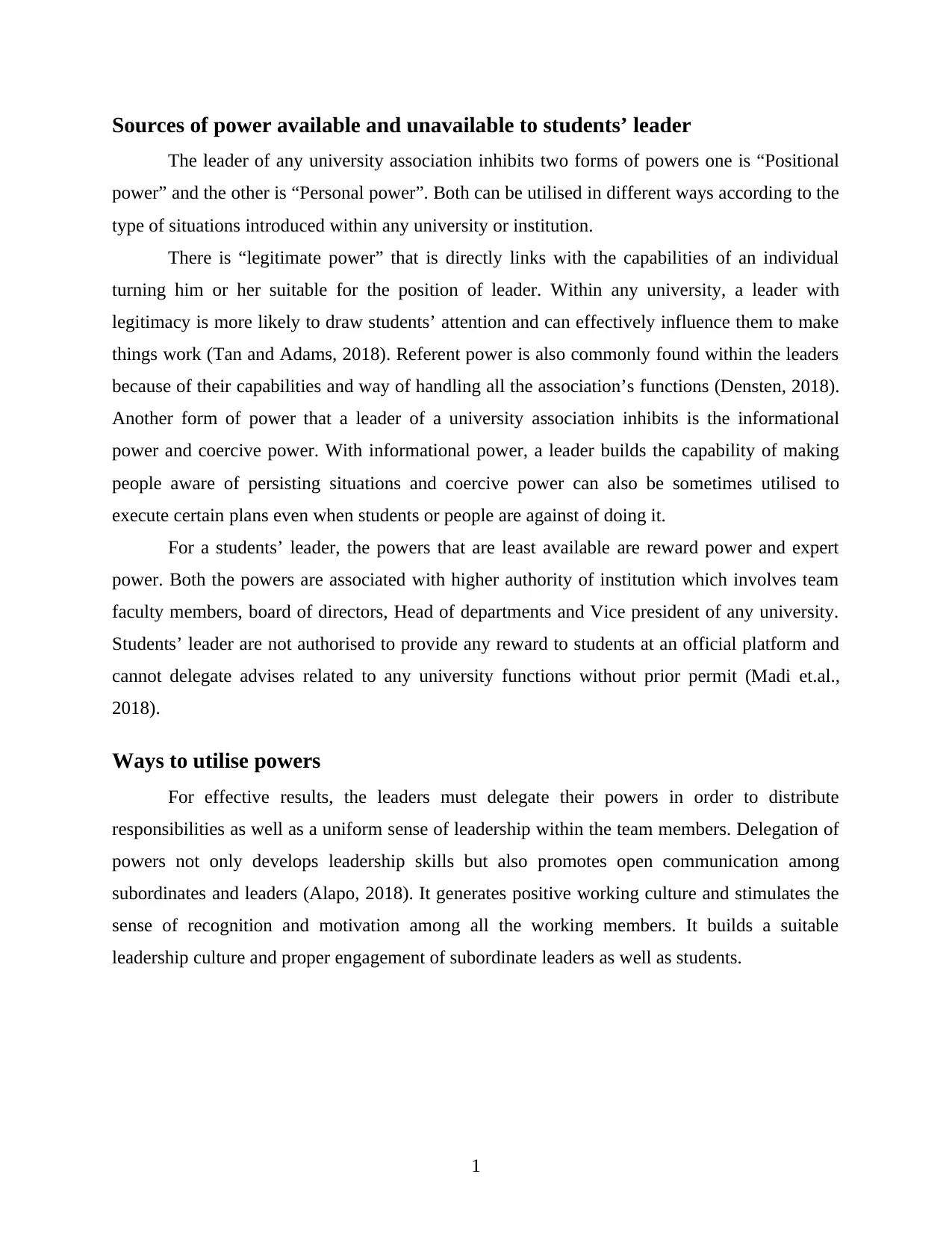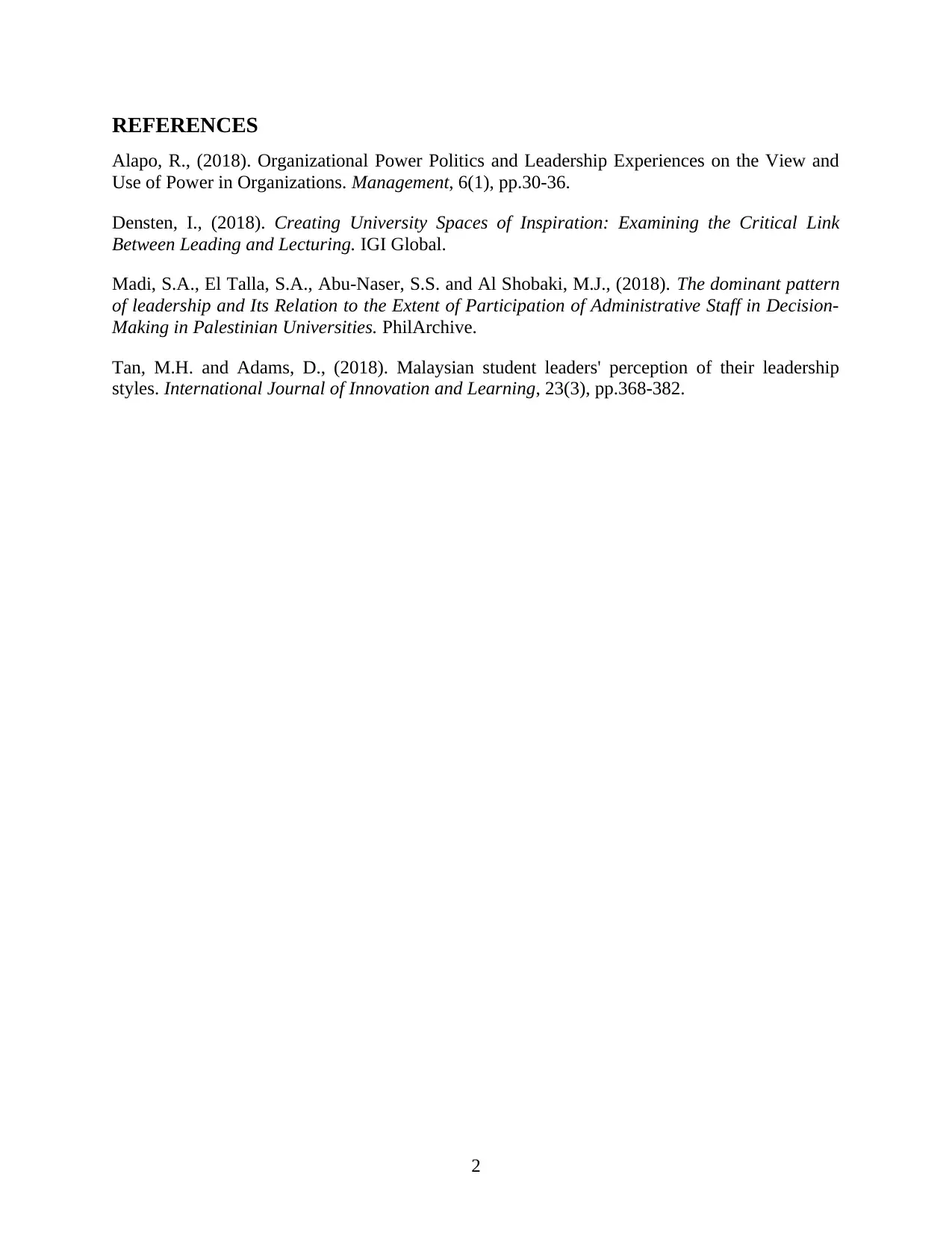An Analysis of Power Dynamics in University Leadership Roles
VerifiedAdded on 2022/10/17
|3
|526
|9
Report
AI Summary
This report analyzes the various sources of power available to university leaders, differentiating between those directly accessible and those that are less so. It explores the significance of legitimate and referent power, highlighting their influence on students and the university environment. The report also examines the role of informational and coercive power within the university setting, as well as discusses how these powers can be utilized effectively. Furthermore, the report identifies and discusses the limitations of student leaders, particularly in relation to reward and expert power. The report also emphasizes the importance of delegating power within a team and fostering open communication, which promotes a positive work culture and enhances leadership capabilities.
1 out of 3










![[object Object]](/_next/static/media/star-bottom.7253800d.svg)